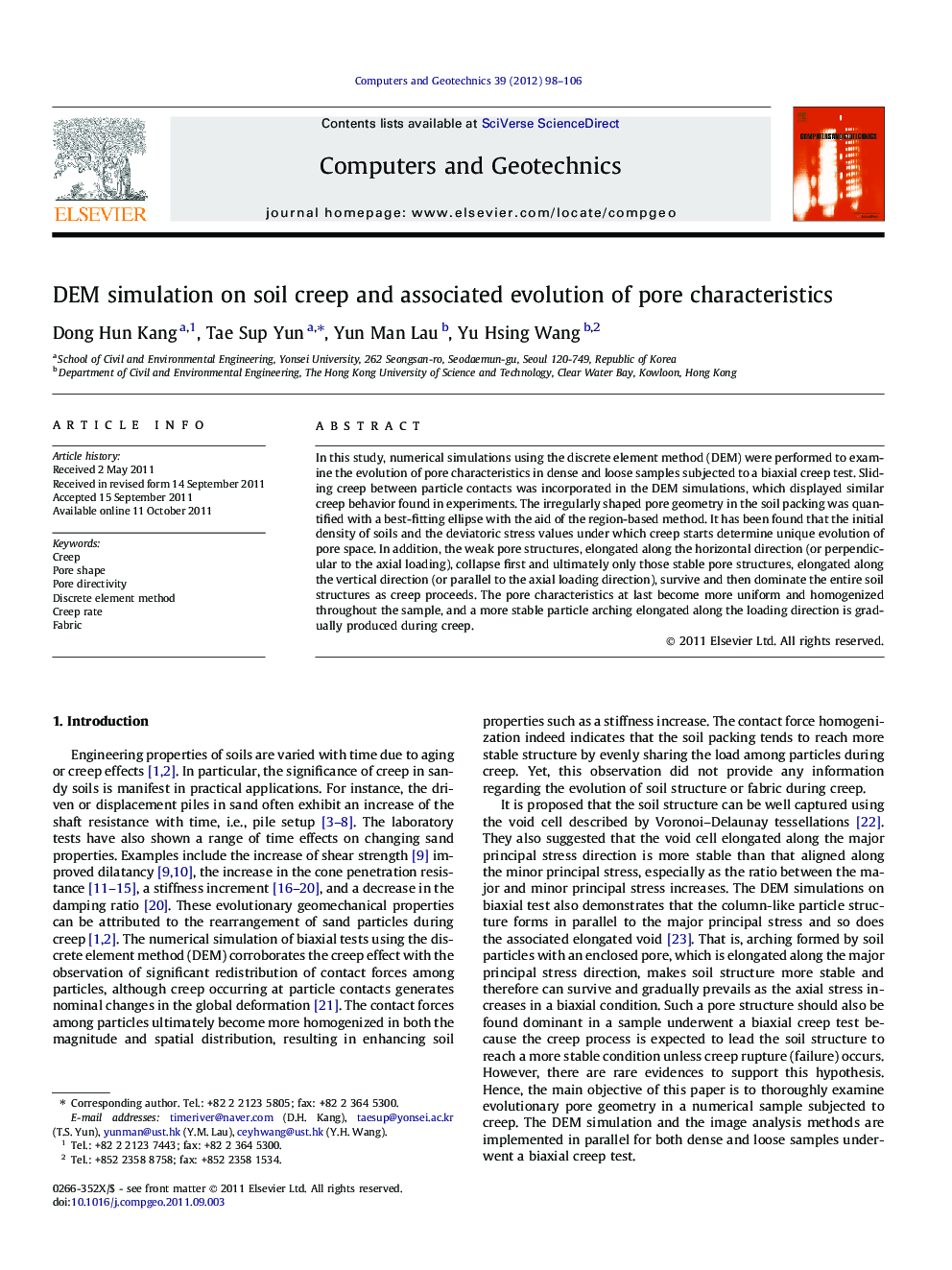| کد مقاله | کد نشریه | سال انتشار | مقاله انگلیسی | نسخه تمام متن |
|---|---|---|---|---|
| 255133 | 503350 | 2012 | 9 صفحه PDF | دانلود رایگان |

In this study, numerical simulations using the discrete element method (DEM) were performed to examine the evolution of pore characteristics in dense and loose samples subjected to a biaxial creep test. Sliding creep between particle contacts was incorporated in the DEM simulations, which displayed similar creep behavior found in experiments. The irregularly shaped pore geometry in the soil packing was quantified with a best-fitting ellipse with the aid of the region-based method. It has been found that the initial density of soils and the deviatoric stress values under which creep starts determine unique evolution of pore space. In addition, the weak pore structures, elongated along the horizontal direction (or perpendicular to the axial loading), collapse first and ultimately only those stable pore structures, elongated along the vertical direction (or parallel to the axial loading direction), survive and then dominate the entire soil structures as creep proceeds. The pore characteristics at last become more uniform and homogenized throughout the sample, and a more stable particle arching elongated along the loading direction is gradually produced during creep.
Journal: Computers and Geotechnics - Volume 39, January 2012, Pages 98–106